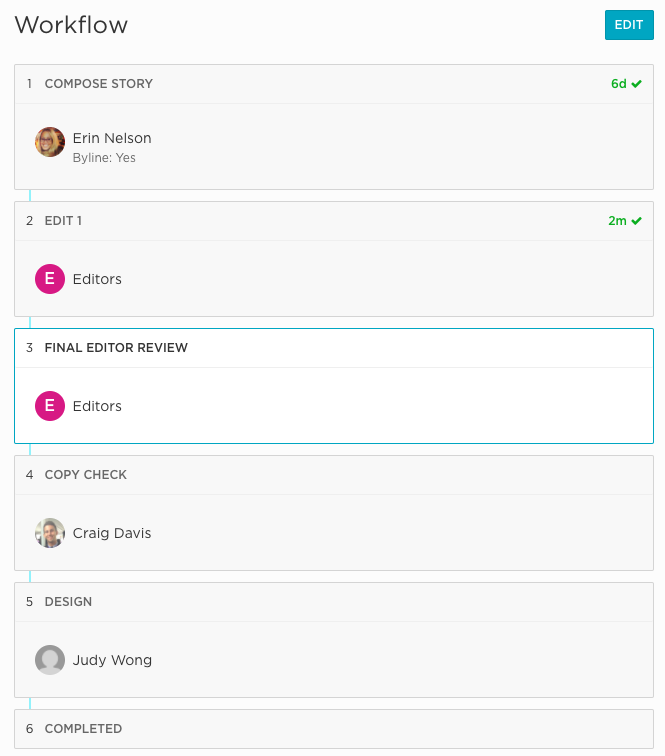Why All Brands Need an Editorial Workflow. Unlike my fireplace reverie, digital publishing involves a regimented system of checks and balances. That system becomes more complicated for brand publishers that must also align with marketing, legal, and design departments. For The Content Strategist, our workflow is driven by our technology, and it’s a crucial part of how we’ve managed to grow as a publication over the last few years. Compared to writing, reporting, and editing, it’s probably the least sexy part of the process. A big bank producing a blog post could have a very different workflow than an educational startup putting together a 30-second explainer video. For context, this is how our workflow looks: Step 1: Compose story To start, our senior editor assigns a story to a member of our internal editorial team or a freelancer. Step 4: Copy check Once the story gets approved, it goes to a copyeditor who focuses solely on grammar and usage issues. When the fields are ready, we push the article to our CMS and publish it on The Content Strategist. (These were the steps involved for publishing this very article.)
When I first imagined being an editor in New York City, I saw myself tucked away beside a fireplace in a cozy cafe—article and red pen in hand. While this fantasy remains a weekly ambition, it looks nothing like my actual life as a digital editor in 2016.
Unlike my fireplace reverie, digital publishing involves a regimented system of checks and balances. That system becomes more complicated for brand publishers that must also align with marketing, legal, and design departments. For The Content Strategist, our workflow is driven by our technology, and it’s a crucial part of how we’ve managed to grow as a publication over the last few years.
Since clients and prospects often ask what our workflow looks like, we decided to outline it here while explaining why each step is important to our content marketing philosophy.
Understanding the unsexy
An editorial workflow is not the sexiest part of publishing. By workflow, I’m referring to the the series of steps it takes to get from an idea to a finished piece of content that’s ready to be published. Compared to writing, reporting, and editing, it’s probably the least sexy part of the process. But it’s still a vital aspect of any successful content program.
If workflows aren’t set up well, they can become messy labyrinths of bureaucracy. We’ve heard horror stories of brands spending six months approving one blog post. That gridlock will ultimately crush the creative spirit, no matter how passionate you are about ideation and writing. But when you have an established workflow all in one place, you can avoid those issues. Maybe you take weeks to approve a piece of content while competitors take months. Maybe you can cut it to days—or even hours.
Building the right workflow differs depending on industry, company size, mission, and the type of content you want to create. A big bank producing a blog post could have a very different workflow than an educational startup putting together a 30-second explainer video. But regardless of the differentiating factors, there are ways you can simplify your publishing process.
For context, this is how our workflow looks:

Step 1: Compose story
To start, our senior editor assigns a story to a member of our internal editorial team or a freelancer. In this first step, the writer composes the story. Once she submits a draft, it triggers an email notification to…
COMMENTS